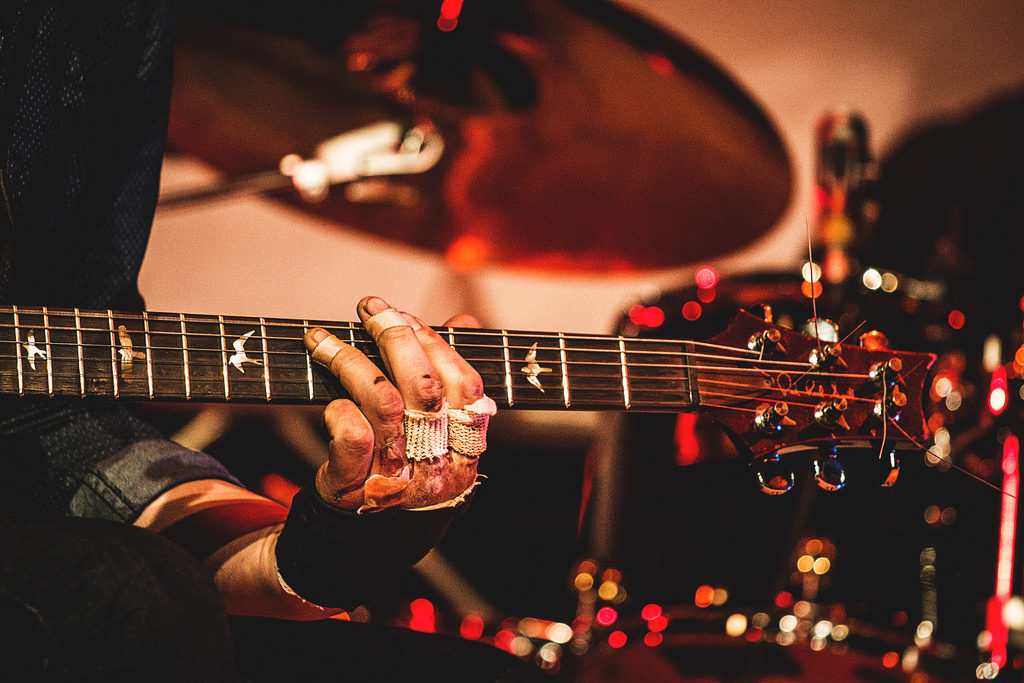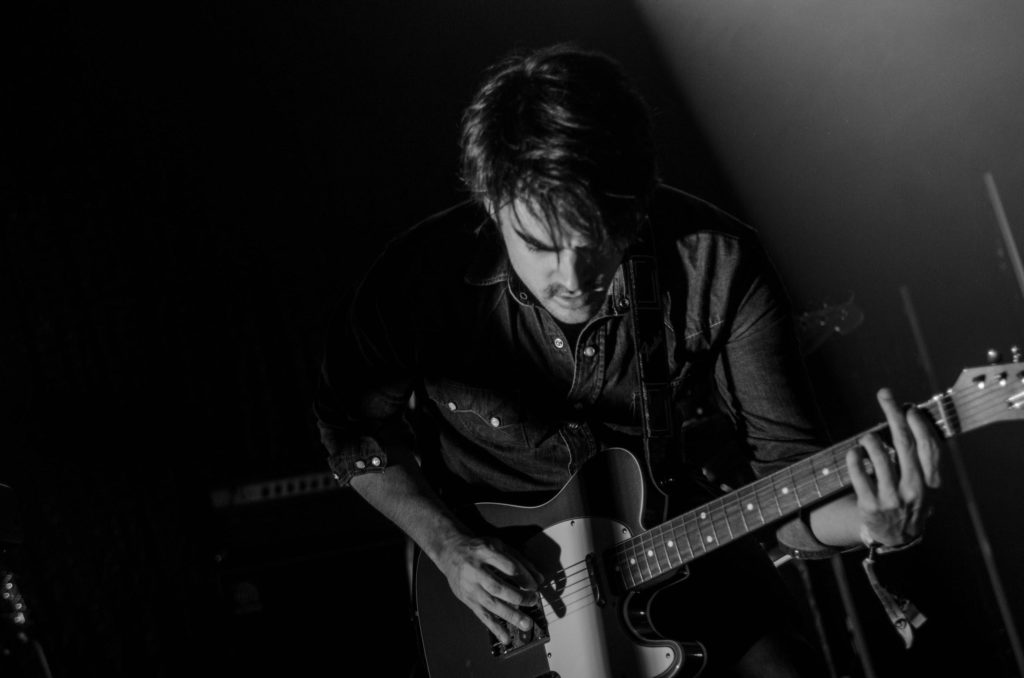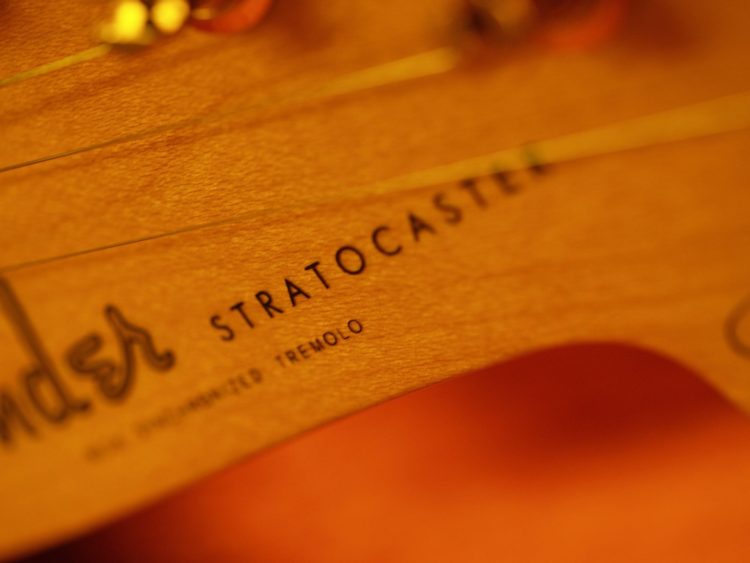This post may contain affiliate links
So you’ve been playing guitar for a little while, love the blues, and want to get deeper into the sounds and gear of your favorite players. Totally understandable. You’ve got a Strat and a Reissue Twin Reverb and it’s all cool but you keep hearing more experienced players talking about blues guitar pedals and effects and you want to know more about them. In today’s article, I will give you four simple tips for making your first journey into the world of pedal effects, including what to buy and how to use them. Soon, you’ll develop your own gear wisdom but, for now, you need practical advice, so here goes.

1. Blues requires the Basics!
You’ll be happy to know that, as a budding blues player, you won’t have to invest in and learn about nearly as many pedals as you would if your goal was to start a Prog group or U2 tribute band. Most classic blues records were made with very little gear, often just guitars and small amps pushed into distortion. However, to cover the general sounds you’ll need to get through the last 50 or so years of blues, you’ll need an Overdrive Pedal, a Wah, a Tremolo, Uni-Vibe, or Leslie Speaker Simulator, maybe an Analog Delay, and that’s about it. The more you lean toward the blues/rock side, the more effects can be used. Use the Reverb on your amp, if you have it, or consider a pedal for it if you don’t, and you are good to go.
2. Truly understand your pedal!
You’ll find that most blues players use fairly simple rigs but are very good about how, when, where, and why to use the pedals they do. You won’t find many people on the blues circuit using sitar emulators or guitar synths, but you will want to understand what a Tubescreamer does.
In general terms, an overdrive pedal will add grit to your sound to emulate the sound of a tube amp turned up loud until it distorts. The pedal will also give you a degree of control over the amount and quality of your overdrive sound that’s hard to get with an amp, especially at lower volumes. With Tremolo units, try to get them to throb in time with the groove you’re playing for extra coolness or turn the Rate control all the way up to simulate a spinning Leslie speaker. A Wah can add expressive vocal qualities to your leads and rhythmic funk to your chords, just use your ear. Most blues players don’t go in for delays outside of short 1950’s-style Slapback Echo, which you can generate using an Analog Delay set for very short delay times and amounts of regeneration. Check out some best delay pedals.
As far as what order to put your pedals in, conventional wisdom tells us to start with your Tuner, Overdrive or Wah and follow those with any Modulation or Time Delay effects you might have. It’s better to add Delay to your Overdrive than to overdrive your Delay. Most blues players don’t use Chorus Pedals and wild Delay effects but, if you just have to have them, put them near the end of your signal chain. Here are my suggestions about 4 typical pedal orders that are easy to start.
Looking for some blues pedal inspiration? Here are a few picks for the best guitar pedals for blues music.
3. Batteries Stink. Power Up!
The only way to fly if you use pedals is with a pedalboard and power supply. Yes, most pedals can run on batteries, but that approach becomes fraught with peril and hassle after a while. The first time a 9-volt-powered box dies on you at the peak of your solo on ‘Whipping Post,” you will begin to understand. Plus, constantly plugging and unplugging them to avoid battery drain gets old and the whole thing becomes messy if you use more than a couple of pedals.
A pedalboard and power supply will also make your life much easier when it comes to setting up and tearing down. All that goes in or out are two guitar cords and a power cable. Nice and easy. Plus, batteries are just too expensive to mess with, at least for very long. The money you spend on a board will come back to you in saved 9-volt expenses.
Here is a whole bunch of wisdom about wiring, powering, and ordering your pedalboard: https://www.youtube.com/watch?v=Rqm5Z06URUg

4. Learn to Use What You Have!
This is one of the most important bits of advice any new player can hear. Take the time to learn what each and every control on each of your pedals do, as well as each control on your guitar and amplifier. Watch enough guitar showoff videos online and you just might start to believe that all these devices just make everything in the world wonderful as soon as you turn them on. Sadly, this is not the case. It’s very easy to make expensive gear sound bad if you don’t know what you’re doing with it but it’s also easy to learn enough about pedals, guitars, and amps that you can dial in a decent sound with just about any rig. All it takes is time spent!
The process is quite simple: go through each knob, switch, and dial in your rig one at a time and listen to what they each do. Take an overdrive pedal, turn the Gain knob all the way to zero, and start bringing it up one number at a time, playing and listening at every stop. Do the same thing with the Tone and Level knobs. Do it with your amp and guitars, too. Don’t just read about what these things do; experience them for yourself. Do this repeatedly with every piece of your gear and you will find the sounds they make and learn to control them. Music is something we learn by doing and your investment of time into this type of work/fun will do more for your overall sound than any piece of gear you could buy.
There are more sounds in even a simple guitar rig than most people realize. If you get a decent batch of gear together and stay with it long enough, you will find every one of them.
This video will give you an idea of how to use and not use a Tubescreamer and other things, plus show you just how interactive each piece of your gear is with every other piece from your fingers to your speakers. Dig: https://www.youtube.com/watch?v=wJ8UMHODKuU
Conclusion
I hope you enjoyed and learned from this short lesson in pedal basics for the new blue. So much of what you hear in blues music is the result of a few basic pieces of equipment turned over to wise hands and ears. It’s very easy for musicians without a lot of experience to get overwhelmed and end up lost in their gear. At that point, many get frustrated and give up. That’s why it was important to me share some knowledge with the newbies out there and help you all get your tone-crafting skills up to where you want them to be.
About the Author
Darrel Gil – a metalhead guitar teacher with a big obsession with shredding, effects & pedals, big fan of progressive music stuff. I share the passions and loves on my blog: https://shredaddict.com/
Featured image: Image from Morguefile free photographs for commercial use

